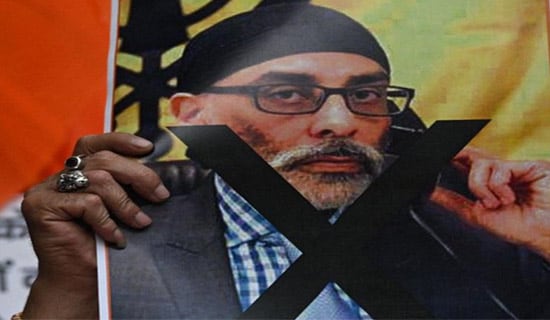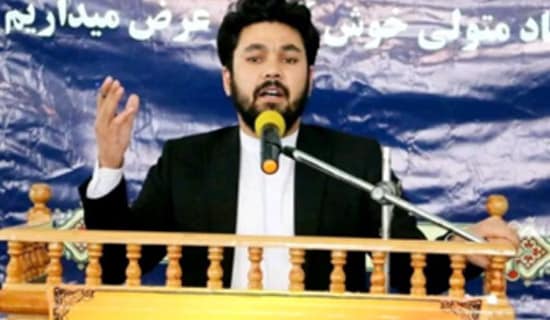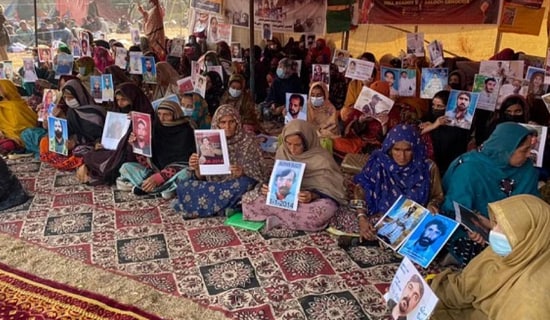Introduction
Military tension is rising between Russia and NATO. The recent NATO-Russia Council meeting, held on July 13, did not bring produce any serious development in terms of political dialogue.[1] The Head of the European Security Department RAS Institute of Europe, Dmitry Danilov, said that the meeting's goal was to reduce risks and mutual harm, since "practically no positive agenda" exists.[2] NATO accuses Russia of conducting "provocative" military activities in the periphery of NATO territory, and of destabilizing European security through aggressive actions such as the annexation of Crimea, and large-scale snap exercises that violate the spirit of the 2011 Vienna Document for building confidence and transparency amongst member states. Russia in return accuses NATO of "confrontational" actions close to the Russian border, since it considers the deployment of NATO' battalions in Poland and in the Baltic countries, and a brigade in Romania a breach of the 1997 Russia-NATO Founding Act. Moscow is also concerned about the U.S./NATO missile defense system deployed in Eastern Europe. NATO claims that it is directed at Iran and not against Russia, but Moscow considers it a direct threat to its nuclear arsenal.[3] According to MGIMO University Associate Professor, Mikhail Troitskiy, NATO could send a positive signal to Russia if it were to abandon its plans to make the European missile defense system capable of "intercepting intercontinental ballistic missile [i.e. nuclear-armed ballistic missile] by 2020, as neither Iran nor other Middle Eastern players seem capable of acquiring such arms."[4]
In May 2016, the pro-Kremlin Russian think tank Council for Foreign and Defense Policies published a memorandum, titled "Russia's Foreign Policy: From the Late 2010s - To the Early 2020s," that pointed to an increased risk of a nuclear war between Russian and the West. The memorandum stated: "In the world of traditional politics, such a rapid re-distribution of economic and political powers and of moral influence would almost inevitably trigger a series of large-scale wars or even a new world war. But so far, this has been prevented by the most important structural factor that has determined the world's development for the past seventy years - nuclear weapons, especially super-powerful arsenals in Russia and the US. They only prevented the Cold War from becoming a nuclear war. Had it not been for the sobering threat of a nuclear Armageddon, the 'old' world establishment would hardly have agreed to the explosive growth of influence of rising powers, primarily China and India. But the proliferation of nuclear weapons goes on, whereas the level of trust, dialogue, and positive cooperation in the military and strategic sphere is extremely low. Taken together, all this increases the probability of a nuclear war. Sustainable international strategic stability has decreased."[5]
Nuclear-Armed Ballistic Missiles Were Deployed In Massive Drills In Russia

Topol-M (Rt.com, July 12, 2016)
Ahead of the NRC meeting, Russian media outlets reported that nuclear-armed ballistic missiles were deployed in massive drills in Russia. The website of the Russian government-funded TV channel RT reported that around 400 military vehicles including those carrying Topol, Topol-M and RS-24 Yars ballistic missiles are taking part in massive snap military exercises across different Russian regions. The drills are aimed at training personnel in rapid response practice, camouflaging, locating enemy units, patrolling, and operating amid biological and nuclear hazards. [6] According to the Russian government daily, Rossiyskaya Gazeta, each regiment covers a territory, which exceeds the combined territory of some European states.[7] The drills are part of a series of different tactical staff training exercises planned for 2016 by the Strategic Missile Forces.[8] The Russian media outlet Vzglyad.ru adds that by the end of 2016, the Russian Strategic Missile Command is expected to conduct up to 40 headquarters drills, 20 command drills, 50 tactical and special-tactical trainings.[9] It is also worth mentioning that large scale strategic missiles drills were previously held on April-May 2016, which involved 400 units of heavy machinery and around 4000 troops. [10]
Commenting on the drills, military expert of the Association of Political Scientists, Andrey Koshkin, said: "This is a summer period of training which is very important since the climate conditions enable having all levels of coordinated training......The thing is that they [NATO] constantly need to prove the Russian aggression. Thus they link any of our actions having to do with mere military training to an aggression."[11]

Topol-M (Rt.com, July 12, 2016)
NATO's Drills - Russian Foreign Minister Lavrov: 'We Are Convinced That There Are No Threats In This Region To Justify Its Militarization'
At the same time that Russia kicked off massive drills. NATO launched Sea Breeze 2016 naval drills in the Black Sea. Bulgaria is hosting the Sea Breeze 2016 naval exercise from July 8 till July 17, 2016. As many as 25 naval vessels from Bulgaria, Romania, Greece, Spain and Turkey, two aircraft and two helicopters, and 1700 troops will took part in the exercise. The Standing NATO Mine Countermeasures Group TWO joined as well the exercise.
Prior to the Sea Breeze 2016, the NATO "Anckonda -16" military drills began in Poland on June 6. "Anaconda-16," the largest military drill held in Eastern Europe since the cold war, lasted 10 days and involved 31,000 service members. Other NATO drills "BALTOPS 2016" (June 3-19) and "Saber Strike" (May 27-June 22), a long-standing U.S. Army Europe-led cooperative training exercise, took place simultaneously in the Baltic region.
SUPPORT OUR WORK

Russian Foreign Minister Sergey Lavrov reacted to the NATO military drills near the Russian border, during a joint news conference with Finland's Foreign Minister Timo Soini in Moscow. Lavrov said: "We have focused on security issues in the Baltic Sea area. We are convinced that there are no threats in this region to justify its militarization. We shared our concerns about increased NATO activities in the region, and NATO moving its infrastructure closer to our borders. We are convinced that all issues of cooperation in the Baltic Sea and the North in general can and should be resolved within the framework of existing multilateral formats in the Baltic Sea region, the Barents/Euro-Arctic Region, and the Arctic ... I can add that we have reaffirmed our belief that each country has a sovereign right to choose a security policy it considers appropriate. At the same time, we make no secret of our negative attitude to the NATO policy of moving its military infrastructure closer to our border and involving other states in its military activities. In this context, Russia has a sovereign right to use such methods to protect its security as appear to be adequate to the existing risks. I am convinced that our Finnish friends and neighbors are aware of this."[12]

On the snake: Anaconda, referring to the NATO "Anakonda- 16" military drill. The cartoon refers to the famous Russian fable, titled "The Swan, The Pike and The Crab", by Ivan Krylov (1768-1844). The three animals, who represent NATO members, don't agree and work at cross purposes. One day, the three animals wanted to pull a cart (which in the cartoon morphs into the NATO "Anaconda-16" military exercise), but the swan, the pike and crab pull in different directions. Therefore, although they exerted all their might, the cart did not budge and all their efforts proved useless. (Vk.com/13studiya, June 27, 2016)
Discussing the NATO drill in the Baltic region, Russia's Ambassador to NATO Alexander Grushko told the Rossiya 24 TV channel: "What we are seeing today in the Baltic States, as a matter of fact, is nothing [other] than attempts towards force development [in line] with the recent hostile policy pursued by NATO. I would not say that it is a direct threat for Russia, but nevertheless, it obviously creates serious risks as we see an absolutely new military reality forming along our border." He then added that NATO's military activity "is profoundly changing the military situation in the region," and warned that "Russia, as is known, can ensure its security very efficiently."
In the interview, Grushko also mentioned that Russia has no plans to attack Poland: "Recently the [NATO] secretary general visited Poland, and during these visits the Polish side was making statements that now Russia knows that an attack against Poland is an attack against NATO, which is completely absurd, as they are discussing a problem that does not exist...There are no plans to attack Poland." He then added that "the [NATO] policy lives in a surrealistic reality, and the most dangerous thing is that it now starts taking the form of military planning and military preparations carried out on territories along our borders," Grushko said.[13]
Endnotes:
[1] See MEMRI Special Dispatch No. 6525, Russian Government Reactions To Meeting Of NATO-Russia Council, July 14, 2016.
[2] Russiancouncil.ru, July 11, 2016.
[3] See MEMRI Special Dispatch No. 6522, Following The NATO Summit In Warsaw July 8-9 And Ahead Of The NATO-Russia Council Meeting On July 13 - An Interim Review, July 13, 2016; See also MEMRI Special Dispatch No. 6525, Russian Government Reactions To Meeting Of NATO-Russia Council, July 14, 2016.
[4] Russiancouncil.ru, July 15, 2016.
[5] See MEMRI Special Dispatch No. 6478. A Comprehensive Memorandum By The Pro-Kremlin Council On Foreign And Defense Policies: 'Russia's Foreign Policy: From The Late 2010s - To The Early 2020s', July 16, 2016.
[6] Rt.com, July 12, 2016.
[7] Rg.ru, July 11, 2016.
[8] Rt.com, July 12, 2016.
[9] Vz.ru, July 11, 2016.
[10] Ntv.ru, March 3, 2016.
[11] Nevnov.ru, July 11, 2016.
[12] Mid.ru, June 6, 2016.
[13] Tass.ru, June 6, 2016.




